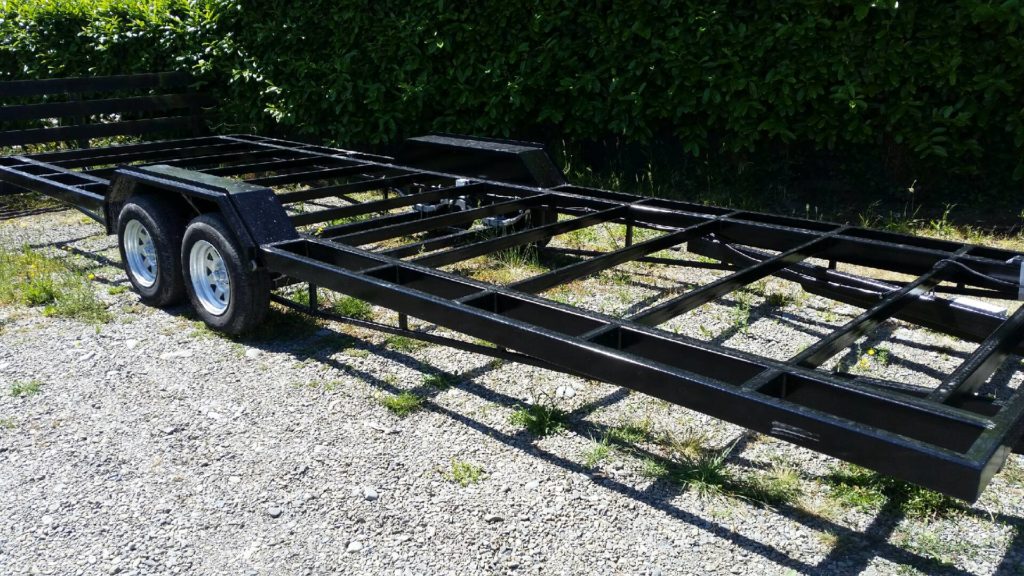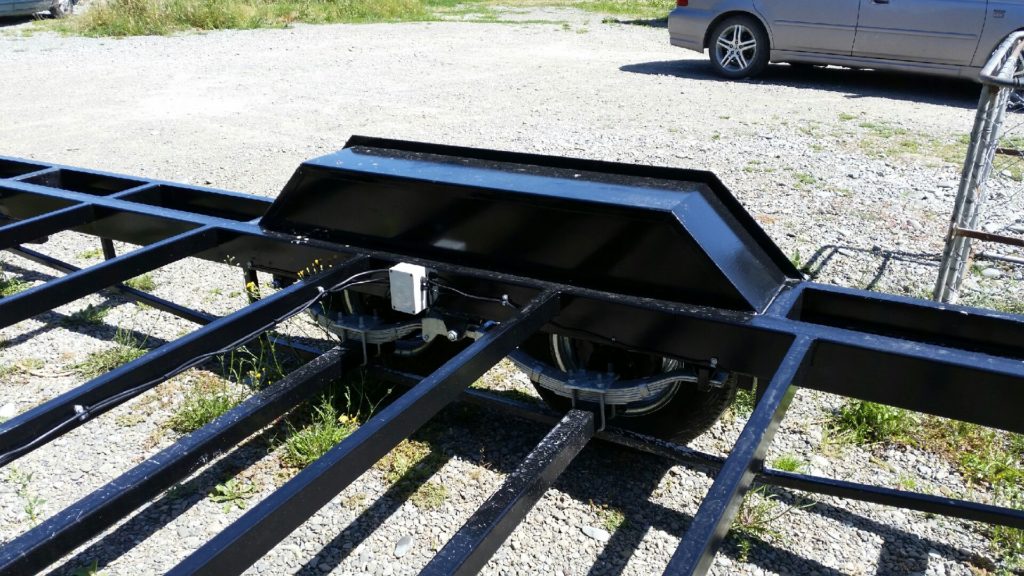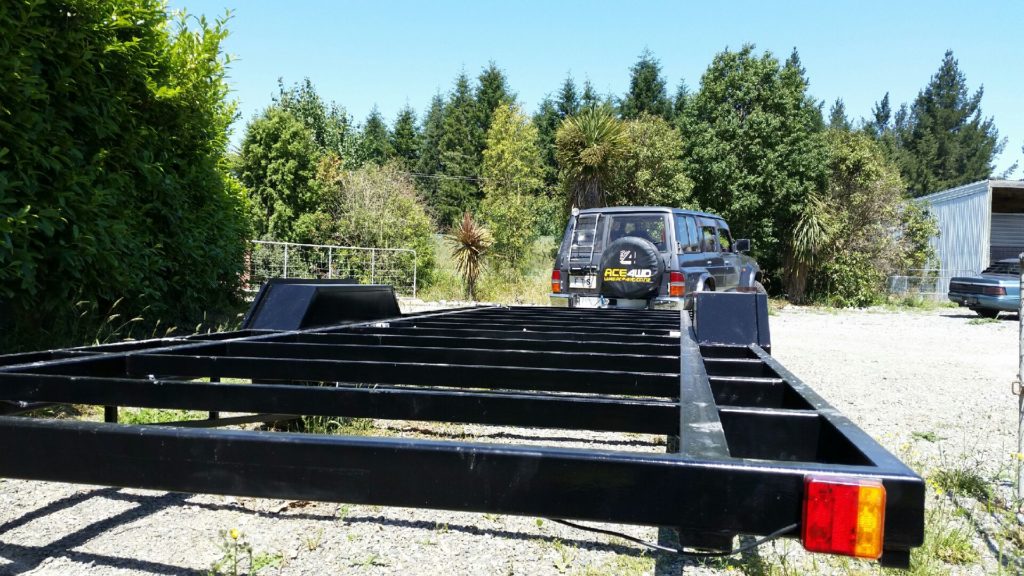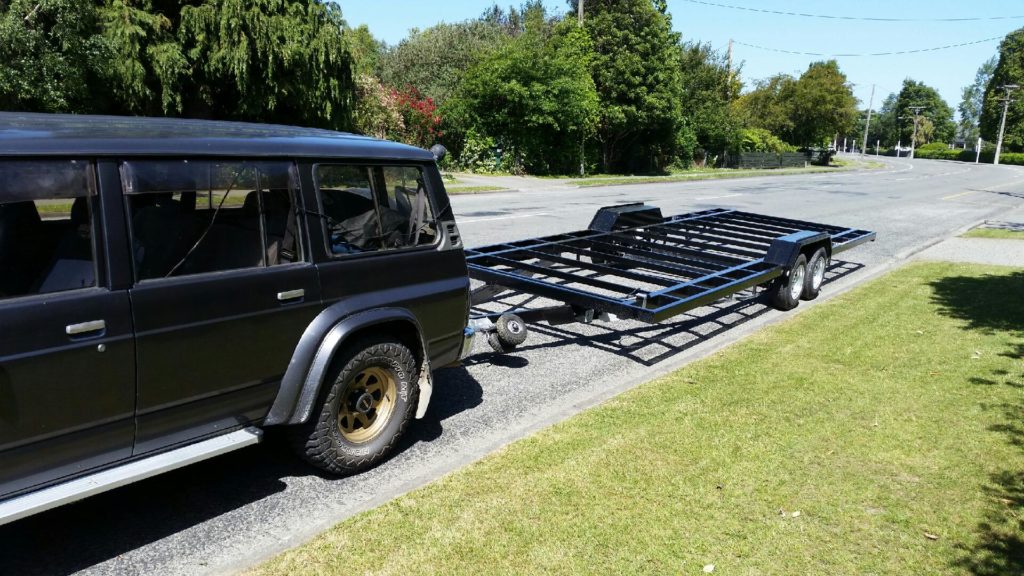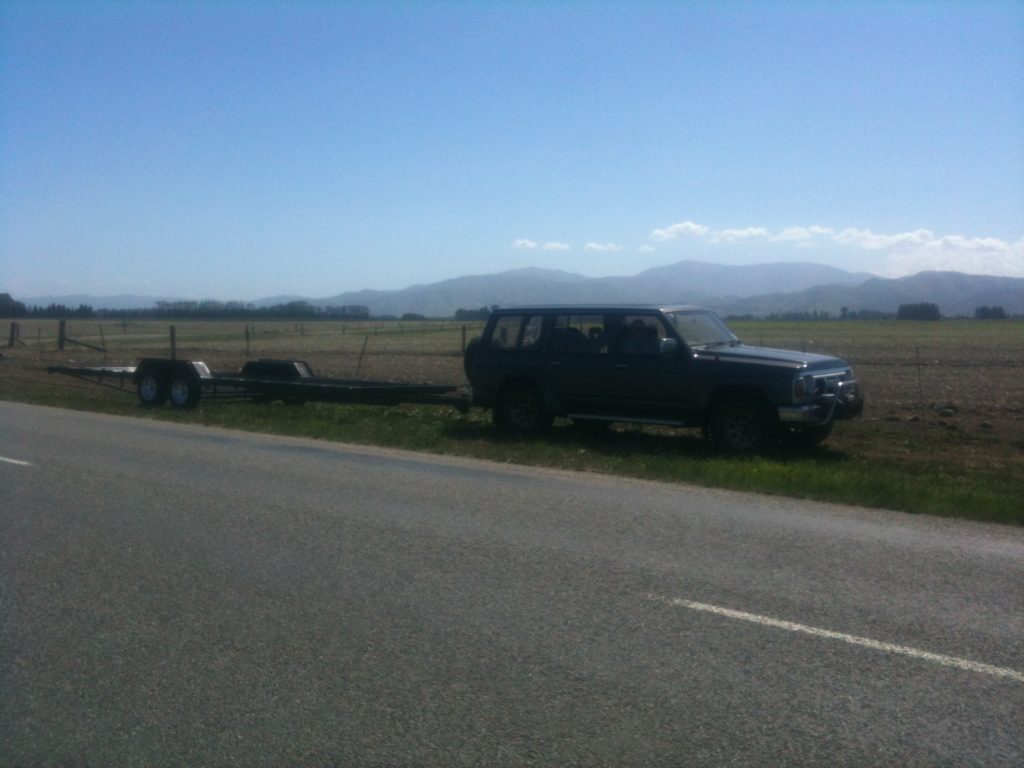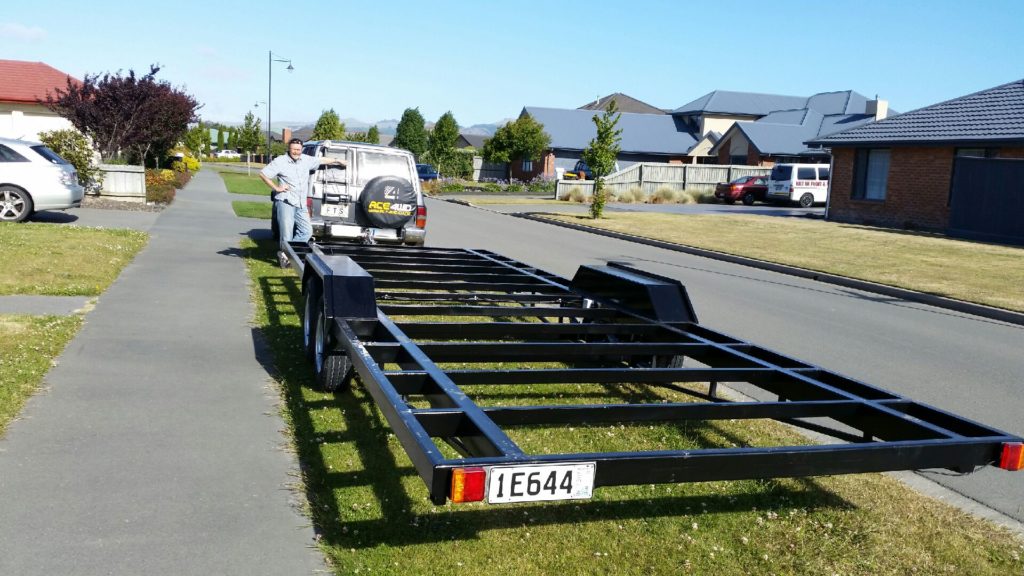The trailer was a big effort. Inspired to build my own as a way to reduce the cost, I poured a significant amount of time into sourcing correct components, designing the trailer and then building it. It would certainly be easier to buy a prebuilt trailer, HOWEVER! I learnt a heap during the process but the major benefit was I was able to design and build the chassis just the way I wanted it. Having now built the tiny house and made numerous shifts from sections around the city I can say that it is very sturdy and doesn’t flex which for a tiny house structure is of great importance.
The last blog written about the trailer was all about the paint work. This quick up-date is to fill in what happened from completing the paint work to getting it towed from where it was built up to Christchurch, New Zealand.
The paint went on well; the photos don’t do it justice as it had just been towed along a gravel road where it became covered in dust. Because of the length of the trailer we were unable to use a hot dip galvanising process due to the tank size being inadequate. So I opted for a durable two part auto paint. The chassis was painted over 2 days though I was using a farmers shed so there were no luxuries of a vented spray booth. Instead we had to battle with wind, rain and insects. Despite these minor set-backs I was able to achieve a good glossy finish ready to move on with the trailer assembly.
Once the paint had cured and hardened I was able to begin the process of assembling the components. First up was fitting the axle assembly and getting the chassis rolling. I used drop axle plates to ensure I could have the trailer deck as low as possible. These are welded directly to the axles and to which the axle spindle is mounted. Each wheel has a safe load capacity of 900Kg so between two axles we have our projected 3500Kg tow weight well supported. Each hub has an electric drum break linked to an on-board battery and breakaway system so should the trailer disconnect from the vehicle the breaks will automatically activate and bring the trailer to a stop…hopefully in one piece.
Using standard trailer electrical plugs we wired the trailer so that the rear lights and number plate can all be removed. This was done primarily so that we could have the house looking neat and tidy while not on the road. Lights are cool but I’d rather see the cedar cladding without a nasty looking number plate in the way. The second benefit is simply that the lights are better preserved as they won’t be bearing the brunt of the sun and UV. It’s a nice to have that I would recommend.
I installed a jockey wheel to the trailer rated for 500KG. In hind sight I would have gone with a heavy duty stand instead. The jockey wheel though only 18 months old has not held up as I would have expected. The tires are obviously cheap and the rubber is cracking due to the UV and though rated for 500Kg they really don’t appreciate even the 200KG they are supporting when the trailer is being shifted. A stand is more robust and though it means you can’t roll the trailer into position quite so easily they don’t have tires and they will hold the tongue weight of the trailer for sustained periods of time. I will only use the jockey wheel to support the trailer weight when moving it; otherwise we jack the trailer up and put blocks under the draw bar.
Installing the componentry and electrics was a relatively painless task. Thanks to being able to design the chassis in CAD and test each component for fitment we were able to avoid any nasty surprises. The trailer sailed through its warrant without any issues and before long we were on the road up to Christchurch where the tiny house build would take place.
The trailer as expected towed really well. The axles sit back 600mm from the centre of the chassis ensuring a small amount of weight is transferred over the draw bar. My aim was to have around 300KG tongue weight. This means the tow ball of the vehicle will be supporting 300Kg whilst the trailer axles support the remaining 3200KG. Generally speaking you want around 10-15% of the trailer weight to be supported by the tow ball, anymore and you will cause stress on the tow vehicle chassis and begin to disrupt the vehicle steering and handling. This important to get right as a trailer that balances the weight only over the dual axles will not track well. The trailer will want to go in its own direction instead of following the direction of the tow vehicle. In New Zealand our regular 4 wheel drive vehicles don’t have a very big tongue weight capacity unlike the larger 4 wheel drives available in the US. It will be wise to check your intended tow vehicle can handle the weight of a tiny house. The later model Hilux and Ford Rangers now are rated to 3500Kg with a max recommended tongue weight of 350KG so they are a good option if you are on the hunt.
If you have any questions regards the trailer construction don’t hesitate to get in touch.
